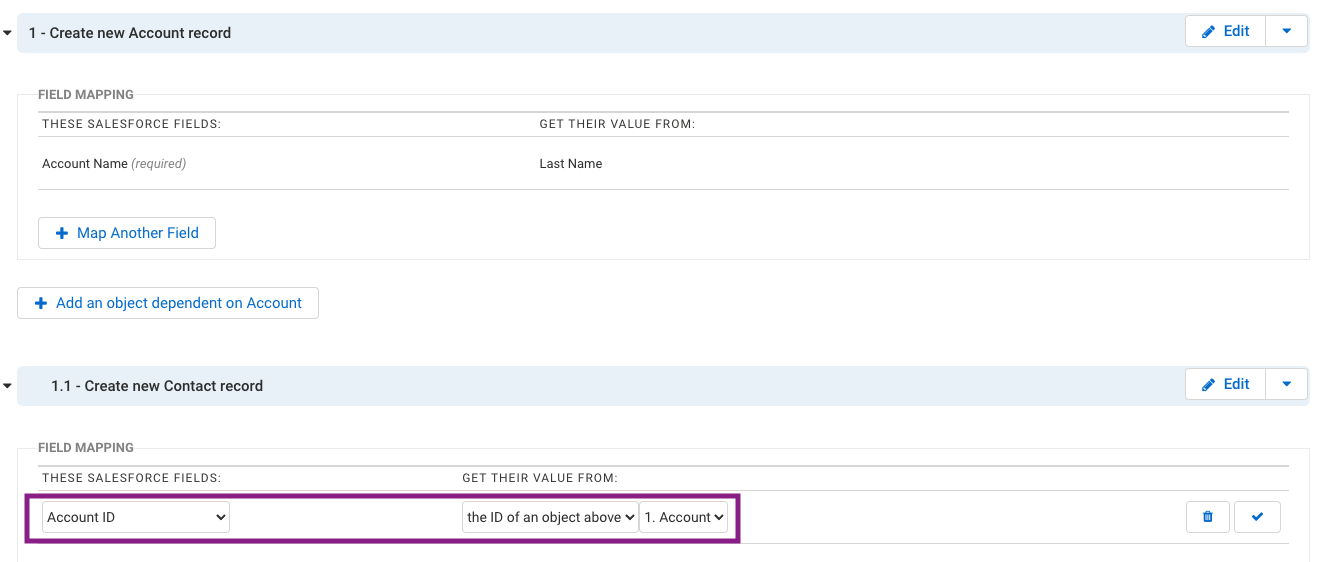About Dependent Objects
Dependent objects can be useful in organizing the flow of data and defining relationships between related records within the connector.
For instance, if you want to make sure a respondent is not a Contact or Lead before creating their Contact record, you would need to use dependent objects. See this example.
Another example would be if you would like to have multiple workflows within your connector. For example, if you want to say, "If this contact exists, add them to campaign A" otherwise, "create a new contact and add them to campaign B" you could do this using Dependent Objects and Skip-If formulas.
In other words, any time you want a step in your connector to happen based on the lookup, creation, or update of another step, you would want to make that step dependent.
Use the Parent Drop-Down
- Create the parent object, then click the button "Add an Object dependent on (Object Name)".

- Tell the connector which field in the dependent object references the parent object.

Alternate Method: Field Mappings
Sometimes the object you would like to reference is not available in the list provided, as seen above. In this case, you may define the relationship in the field mappings, as seen below.


